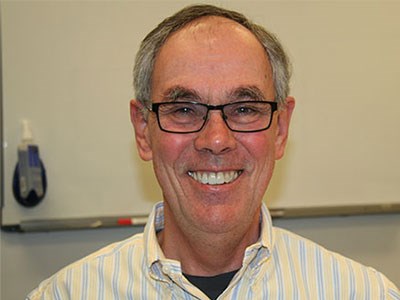With a rapidly growing engineering school—enrolments will top 600 students this year—laboratories and lecture space are at a premium at the Bharti School of Engineering, and Dr. Dougal McCreath believes Laurentian University should look down—way down—for a solution.
“Utilizing underground space is something that I and many others around the world have been very interested in for many, many years,” said McCreath, professor emeritus at Laurentian University and the school’s former dean. “There are some remarkable underground developments around the world.”
Among them are the ancient Jordanian city of Petra; Poland’s salt mines, some of the world’s oldest; and burrowed out limestone mines in Kansas City that are now used in food preservation.
“What we’ve tended to do is put parking underground and buildings aboveground,” said McCreath, a rock mechanics engineer.
“What I’m thinking about here is the other way around.”
He envisions tunneling under the parking lot at the Fraser building to create more lab and classroom space. The facility could be built incrementally to save on initial investment costs.
The development would have the added benefit of connecting the science and engineering building to the Willet Green Miller Centre, which houses research organizations like the Centre for Mining Innovation (CEMI) and the Mining Innovation Rehabilitation and Applied Research Corp (MIRARCO).
The current separation of the two entities puts up physical and psychological barriers to communication, McCreath said. Building underground has several advantages over building on the surface; chief among them is the lower cost of heating and cooling. But underground buildings also have fewer maintenance requirements, they’re resistant to earthquakes and fireproof, and they’re quiet and offer vibration control.
“Over the full cycle lifetime, the cost of underground building is very competitive; it’s probably cheaper than aboveground,” McCreath said. “The problem is the front-end capital cost tends to be higher, so it costs you more to build it in the first place, but the lifetime cost is usually less.”
Being situated in a mining hub like Sudbury, McCreath believes the city and its experts have the knowledge and capability to make it happen. Mining supply and service companies wanting their names associated with such a project could offer in-kind help or services, reduced profit margins or donations of funds or services.
The project could also offer research and learning opportunities for the engineering students, as well as those at Laurentian’s newly opened School of Architecture, which welcomed its first cohort of 70 students in September.
McCreath proposes students could use the opportunity to do some “blue-sky dreaming” about what such a project might look like.
“We have this brand new school of architecture; the focus is ‘northern,’” McCreath reasoned. “Well, here you go.”
McCreath’s proposal is just an idea at this point. Laurentian has neither the finances nor the intention to increase infrastructure for the engineering program. But if it continues to grow at an accelerated pace, he believes space will be needed and now is the time to start thinking of the future.
He proposes conducting a preliminary feasibility study to determine what kind of rock lies below the surface, potential ideas for infrastructure and estimated costs so that if the time does come to start seriously looking at expansion, the idea can be ready.
“If nothing else, I’d like to put a little challenge out there to say, it’s a mining community, it’s a northern community, we have a hugely growing school of engineering, we have a brandnew school of architecture: let’s do something interesting and a bit of hallmark for Sudbury and see what people think.”




